Top 7 Best Yoga Poses For High Blood Pressure Patients | How Yoga Helps Reducing Hypertension (High Blood Pressure)?
Hypertension or high blood pressure is a well-known disease in India and worldwide. Nearly one in five young adults in India has high blood pressure, shown at the 70th Annual Conference of the Cardiological Society of India (CSI). The fact gives a glimpse of about 80 million people, are suffering from this disease which is more than the 1/3 of Indian Population. Hypertension is a condition where the major blood pressure increases to a higher level.
Table of Contents
How to Know If You Are Suffering From High Blood Pressure
A healthy blood pressure is measured as less than 120/80 millimeters of mercury (mm Hg). A generic form of blood pressure is considered normal if lower than 140 mmHg. However, if you undergo from high blood pressure levels various symptoms will show such complexities in your body. The common types are :

- Healthy: A hale and hearty blood pressure reading is less than 120/80 (Systolic/diastolic) millimeters of mercury (mm Hg).
- Elevated: The BP (Blood Pressure) reading used to be between 120 and 129 to less than 80 mm Hg. This is slightly up or down than the optimum BP reading.
- Stage 1 hypertension: The BP reading is between 130 and 139 to 90 mm Hg.
- Stage 2 hypertension: The BP reading is between 140 mm Hg or higher to more 90 mm Hg or higher.
- Hypertensive crisis: The BP reading is over 180 mm Hg, to 120 mm Hg. It is considered an emergency situation with respect to the patient or any person. Anytime a person can suffer a massive heart stroke or heart attack in this crisis reading of High Blood Pressure.
Common Reason for High Blood Pressure (Hypertension)
Some of the common causes of this disease is (not limited to):
- Genetic or hereditary,
- Excessive body weight,
- Excessive salt intake in food,
- An unhealthy lifestyle,
- Excessive stress in work or home
- Excessive alcohol consumption
- Smoking
There are few other factors also work for Hypertensions such as kidney disease, sleeping disorder, heart blockage or defects, Thyroid gland problems, side effects of medications, adrenal gland problems, etc.
What Are The Symptoms Of High Blood Pressure (Hypertension)?
Hypertension is also known as a silent killer cause it happens in a silent condition. Many of us won’t even experience any symptoms. It may take a lot of time (years or even decades) to become aware of an individual is suffering from High BP. It is always better to check the reading once in a month or two.
Symptoms of severe hypertension can include:
- Headaches
- Breathing difficulty
- Nosebleeds
- Ringing in the ear
- Dizziness
- Palpitation (chest pain)
- Visual changes
- Blood in the urine
Hypertension (High Blood Pressure) Statistics
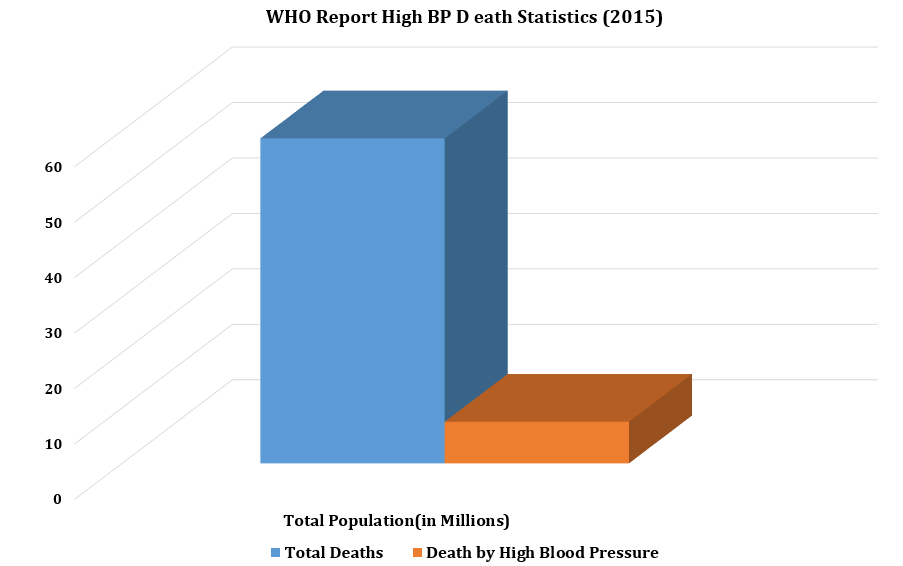
In 2015 according to the WHO, High BP was accountable for 7.5 million deaths, about 12.8 percent of the total of all deaths globally. The Global Burden of Disease (GBD) study of 2016 exhibited that high systolic BP, defined as >140 mmHg, was the second leading risk factor in terms of sharing disability-adjusted life years (DALYs) in men (122.2 million DALYs) after smoking and the leading risk factor in women (89.9 million DALYs).
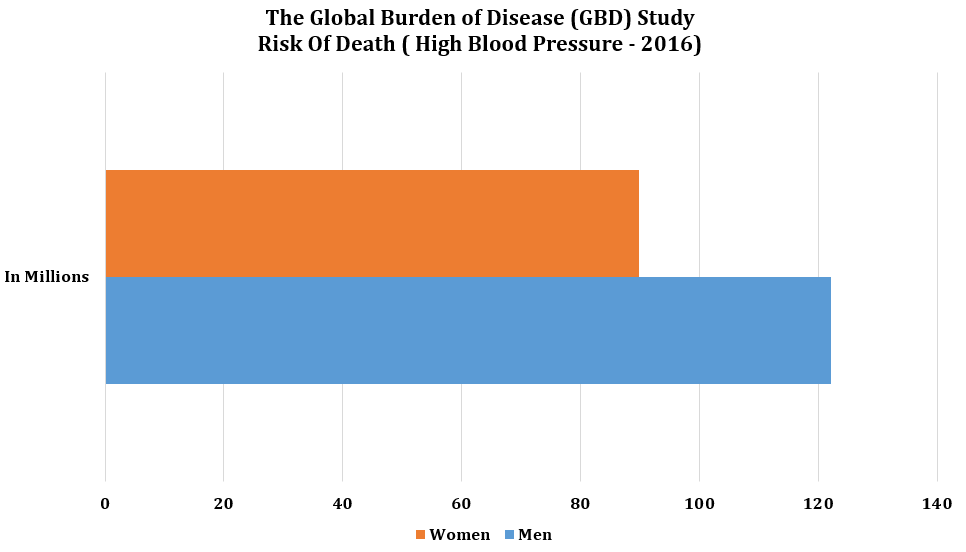
Hypertension is a major problem in India and around the world. It and causes a significant burden on the health system. According to data from the GBD study of 2016, hypertension led to 1.63 million deaths in India in the year 2016 alone.
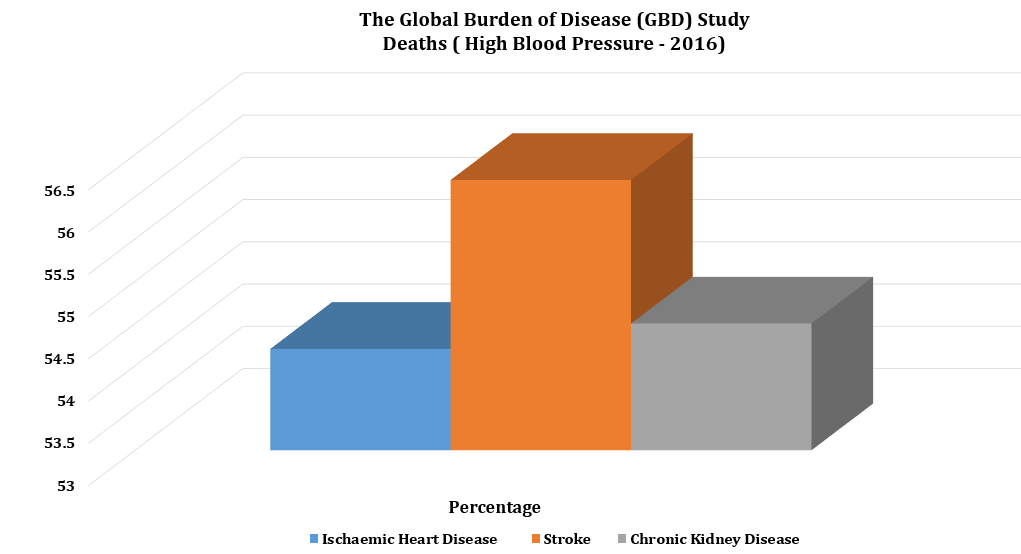
GBD data also showed that over half of the deaths due to ischaemic heart disease (54.2%), stroke (56.2%), and chronic kidney disease (54.5%) were attributable to high systolic BP. In India, a growing no of the population is facing the occurrence of hypertension.
A cross-sectional, population-based study on a large nationally representative sample of 1.3 million individuals carried out between 2012 and 2014 revealed that the crude prevalence of hypertension in India was 25.3 percent. Hypertension occurrence was common even among younger age groups, with approximately one out of every 10 individuals aged 18-25 yrs. are facing this disease
The hypertension epidemic in India is further complicated by the fact that a large proportion of individuals is unaware of their hypertension status.
In a systematic review on hypertension, overall prevalence for hypertension in India was 29.8%. Significant differences in hypertension prevalence were noted between rural and urban parts [27.6% and 33.8%].
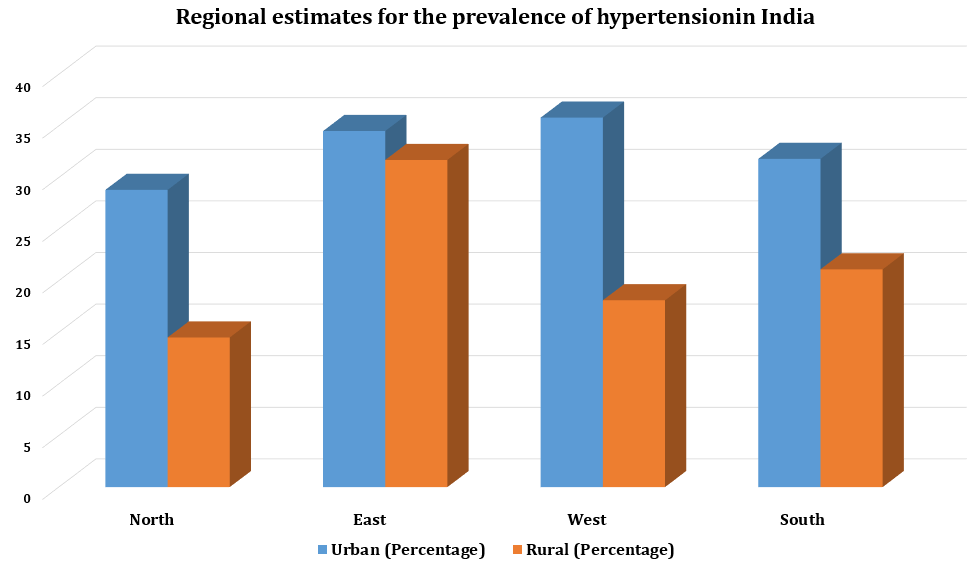
Regional estimates for the prevalence of hypertension were as follows: 14.5% (13.3–15.7), 31.7% (30.2–33.3), 18.1% (16.9–19.2), and 21.1% (20.1–22.0) for rural north, east, west, and south India; and 28.8% (26.9–30.8), 34.5% (32.6–36.5), 35.8% (35.2–36.5), and 31.8% (30.4–33.1) for urban north, east, west, and south India, respectively.
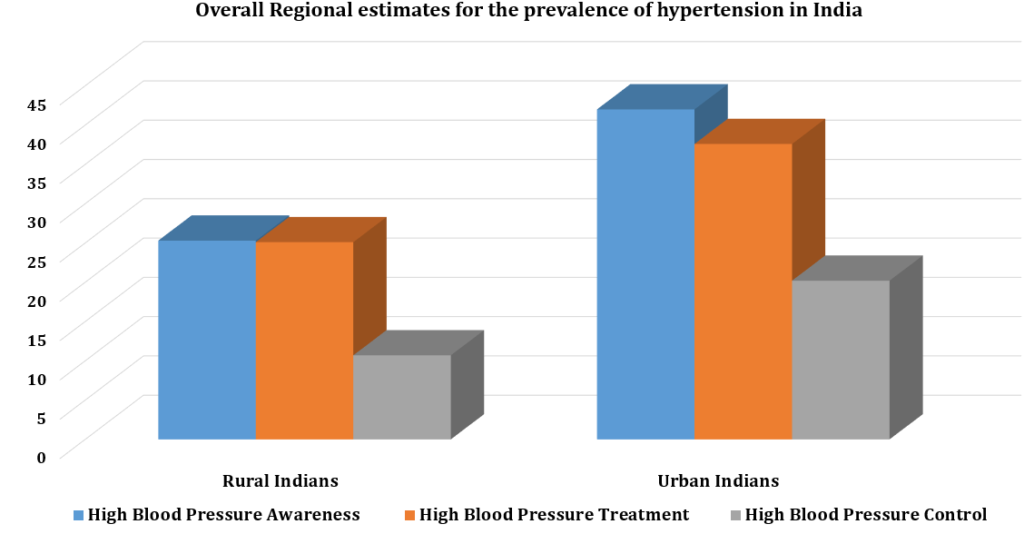
Overall estimates for the prevalence of awareness, treatment, and control of BP were 25.3% (21.4–29.3), 25.1% (17.0–33.1), and 10.7% (6.5–15.0) for rural Indians; and 42.0% (35.2–48.9), 37.6% (24.0–51.2), and 20.2% (11.6–28.7) for urban Indians.
How Yoga Helps Reducing Hypertension (High Blood Pressure)?
Fortunately, Yoga had shown us great knowledge and so many insights, you can easily identify and prevent Hypertension. Yoga is a knowledge practiced and taught to common people for their well-being by ancient Indian Sages, Munis, and Rishis.

If we change a few things in our life or change our lifestyle then we can easily bring down High BP to a Normal Blood Pressure. The asanas I will discuss will bring a preventive measure for Hypertension if practiced regularly.
But please remember in a severe condition you have to talk to the doctor. If you are suffering high blood pressure, you should bring it under control.
Apart from reducing alcohol consumption or smoking the amount of salt intake also need to be reduced. It’s as simple that you have to make some lifestyle changes. Yoga can bring lower the blood pressure unsurprisingly and reduce hypertension within 1 and ½ or 2 months if practiced with utmost concentration.
Here is a list of yoga asanas to subordinate the high blood pressure.
Uttanasana (Standing forward bend pose)
Uttana – Stretched out/Standing; Asana – Posture
Uttanasana is great for sleeping disorders and relieving stress. This is the reason particularly, it helps our heart muscle.
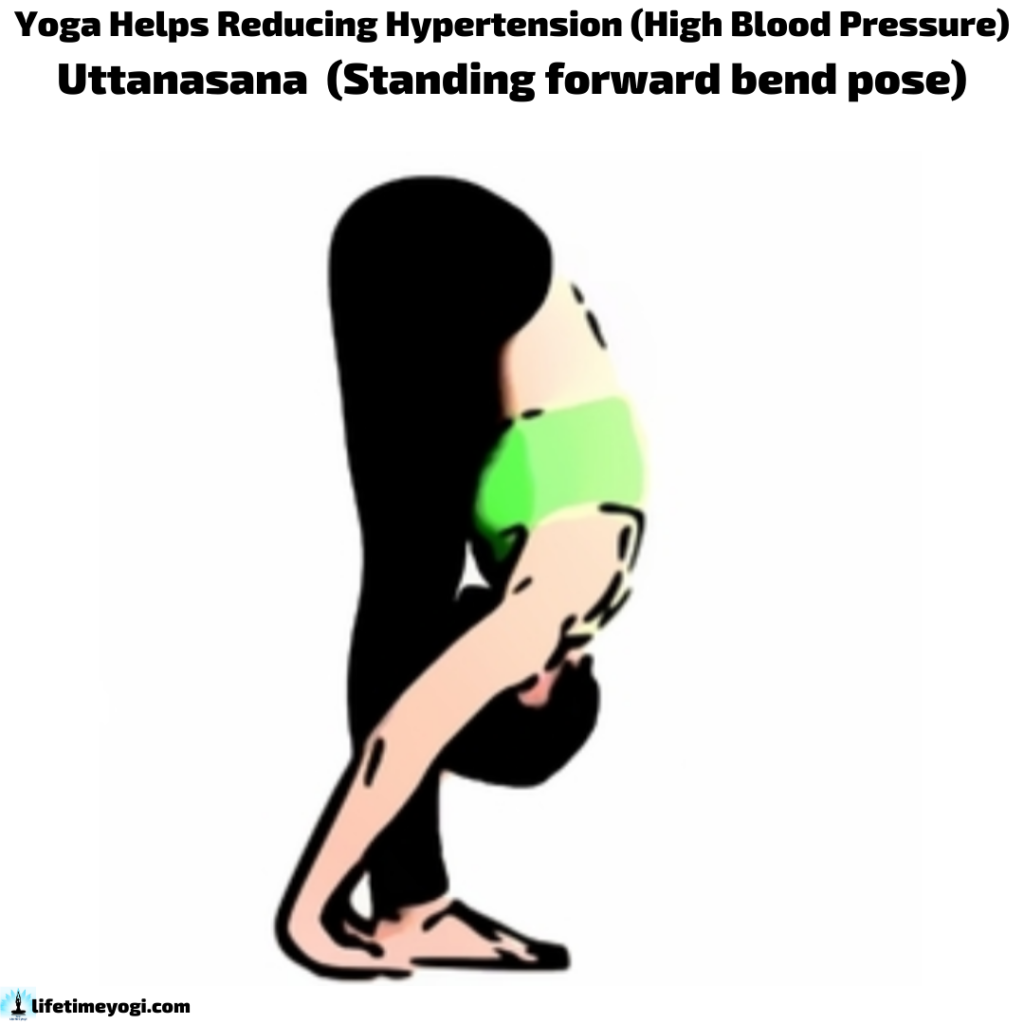
How to do Uttanasana
- 1. Start by standing straight with your hands by your side.
- 2. Slowly high your hand above your head.
- 3. Bend forwards without bending your knees until your palms touch your feet (preferably) the floor.
- 4. Hold this position for 30 to 40 seconds.
- 5. Remember to exhale while bending and keep normal breathing.
- 6. Inhale while getting up and Return to the original position.
Benefits of Uttanasana
- Uttanasana or the standing forward bend pose is great for sleeping disorder.
- It helps your nervous systems and will calm you down.
- The asana stretches your abdomen muscles and your hamstrings.
- Uttanasana helps in relieving stress and lowering High Blood Pressure.
Who should not do Uttanasana?
People having neck or any operation or pregnant woman or women on menstrual cycle should not perform Uttanasana.
Viparita Karani (Legs-up-the-wall pose)
Viparita – Opposite; Karani – Action
Viparita Karani is a mild, restorative yoga exercise to relax your body. It can be practiced by anyone of any age. This asana is good for Hypertension and improves blood circulation in your body.

How to do Viparita Karani
- 1. Select a suitable place as you will do it against the wall to practice this asana.
- 2. Sit facing the wall and your legs stretched in front of you.
- 3. Lie down and bring your legs against the wall with your soles facing upside.
- 4. Check if your butt is a little bit away from the wall.
- 5. Your legs should be 90-degree angle with your body by now.
- 6. Remain this posture for at least 5 minutes and then return to the original position.
Benefits of Viparita Karani
- Relieves stress and tension.
- It is great for your heart as it elevates the legs which promotes relieving of extra fluid from our body. In addition, gravity assists circulation by facilitating the return of blood back to the heart.
- Make you look young.
- Regulates blood flow.
- Helps testicular, semen, and ovarian problems in men and women respectively.
- Improves digestion.
- Restores tired feet or legs.
- Stretches the back of the neck, front torso, and back of the legs.
Who should not do Viparita Karani?
There are no such restrictions for Viparita Karani pose but based on the individual body. Check and then perform. If you are pregnant, menstruating, suffering from eye problems then avoid this posture.
Adho Mukha Svanasana (downward facing dog pose)
Adho – Forward; Mukha – Face; Svana – Dog
Adho mukha svanasana posture is similar to a dog bending forward, brings the name downward facing dog pose. This asana is an easy posture and can be practiced by anyone.

How To Do Adho Mukha Svanasana
- Put your hands and legs on the ground. Form a table like posture.
- It should look like your buttocks as the top of the table, hands, and feet from the legs of the table.
- Breath out lift the hips up, with straight knees and elbows, form an inverted V-shape with the body.
- Hold the pose and take long deep breaths. Look towards the navel.
- Exhale. Bend the knees, return to table pose. Relax.
Benefits of Adho Mukha Svanasana
- This pose brings a lot of energy in the system.
- It fetches lots of energy and rejuvenates the body.
- It grows the spine, rejuvenates the abdomen muscle and lungs capacity.
- This asana is mainly for increasing blood circulation which helps our Heart for maintaining a stable and lowering High blood pressure.
Who should not do Adho Mukha Svanasana?
This posture should be avoided by patients with Carpel tunnel syndrome or having problems in their eyes. People having high blood pressure and shoulder problem.
Paschimottanasana (Seated Forward Bend Pose)
Paschim = west; uttana = stretched out; asana = pose
Paschimottanasana for Reducing High Blood Pressure!!
Paschimottanasana acts as a stress reliever and it reduces your anxiety, and mental issues such as anger, and irritability. The yoga workout helps you to gather better attention or focus that creating regeneration of your entire body by creating a highly favorable mental state.

How to do Paschimottanasana / Seated Forward bend yoga pose
- Sit with your legs stretched out in front of you, keeping the spine erect and toes bent toward you.
- Breathing in, raise both arms above your head, and stretch up.
- Breathing out, bend, keep the spine straight concentrating on moving towards the toes, rather than down towards the knees.
- Place your hands on your legs, wherever they reach, without forcing.
- Keep breathing normally while performing the pose.
Benefits of the Seated Forward bend / Paschimottanasana
- Stretches lower back, hamstrings, and the spine and brings flexibility in hips also.
- Reduces fat in the abdomen, Tones the shoulders.
- It regulates the menstrual cycle.
- Helps to reduce High Blood Pressure and reduce anxiety, anger, and craziness.
Who should not do Paschimottanasana?
For performing this asana there is no such remarkable precaution exists but it is mainly based on individual physique and tolerance level. Pregnant women should check a doctor before doing these yoga postures.
Supta Padangusthasana (Reclining Hand-to-Big-Toe Pose)
Supta = lying down, reclining; Pada = foot; Angusta = big toe
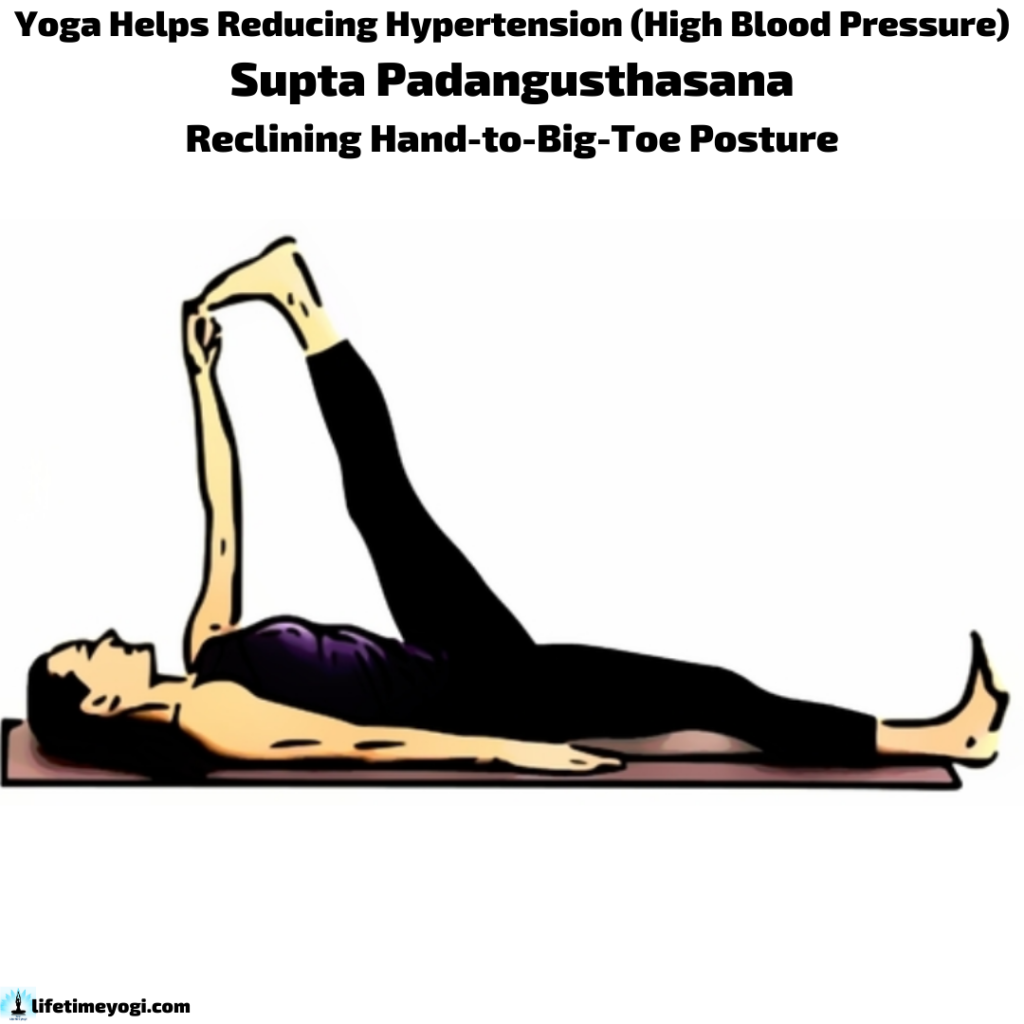
How to do Supta Padangusthasana
- Lie down on your back with legs extended.
- Bend any of your (right or left) knee and hold close your leg into your chest.
- If required take a yoga strap and tie the ball of the performing foot.
- Stretch your right leg upwards, toward the ceiling with the foot contracted, and both sides of your butt equally resting on the floor.
- Hold your leg up for a minimum of 30 to 40 seconds.
Benefits of Supta Padangusthasana
- Great for our heart as it eliminates stress, anxiety and fatigue by energizing the body.
- Supta Padangusthasana improves balance and flexibility in our upper back.
- Improves blood circulation especially in the upper part of the body.
- Advantageous for those who suffer throat and nasal irritation.
Who should not do Supta Padangusthasana
This posture should be avoided by patients with recent operations or pregnant women or having problems in the mensuration cycle.
Setu Bandhasana (Bridge pose)
Setu – Bridge; Bandha – Bound, Lock; Asana – Pose, Posture
The pose resembles a bridge, hence the name.
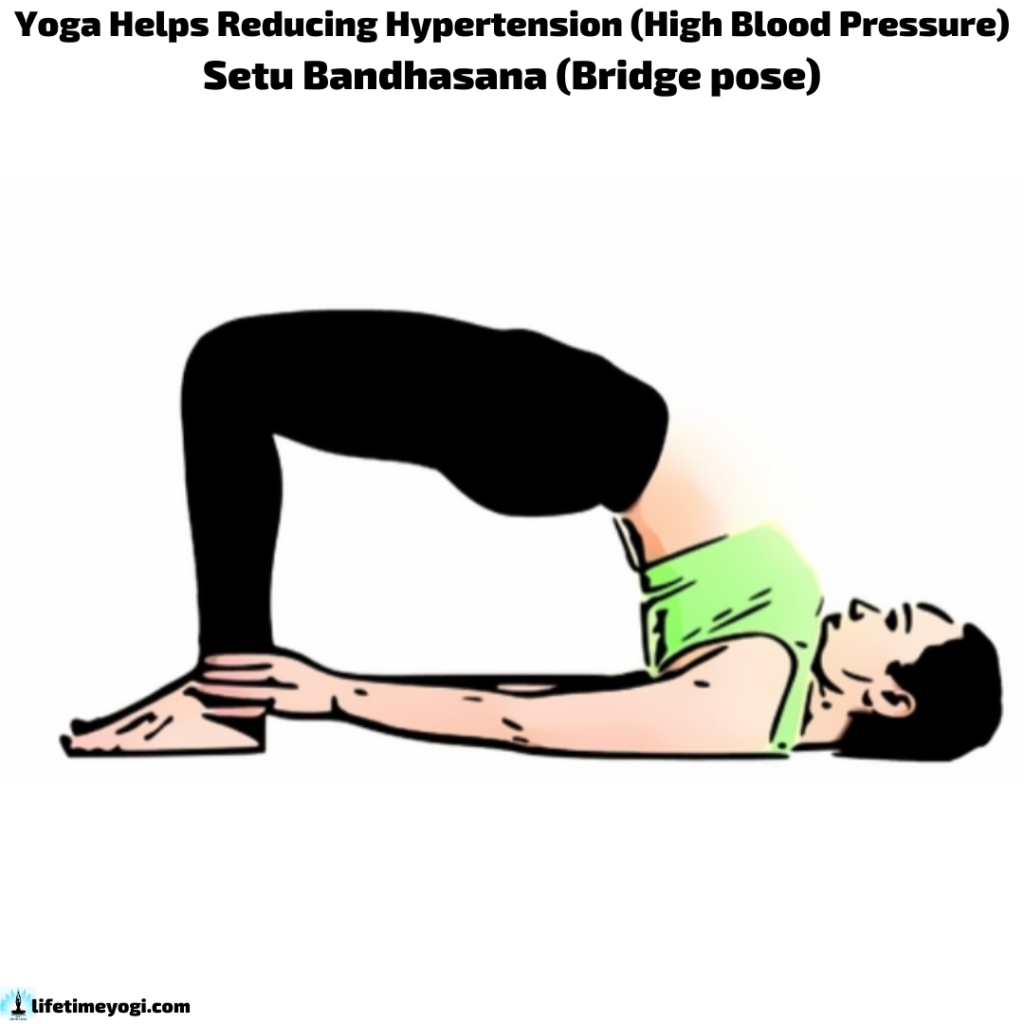
How to do Setu Bandhasana
- Start by lying on your back and then bend your knees.
- Keep your feet with a little bit of distance apart.
- Now, inhale and lift your hips up, keep your shoulder on the mat.
- Place your fingers below your hip.
- Hold the position for 30 to 40 seconds and take normal breaths
- Come back to the original posture.
Benefits of Setu Bandhasana
- This asana stretches your chest, spine, and neck. It strengthens your back muscles and is a great stress reliever.
- Stretches and strengthens the chest, neck, spine, and hips.
- Improves circulation of blood and helps alleviate stress and mild depression. This is the reason it lower High Blood Pressure.
- Rejuvenates the brain and central nervous system.
- Improves digestion.
Who should not do Setu Bandhasana?
This posture should be avoided by patients with recent operations and pregnant women or having problems in the mensuration cycle.
Top 5 Pranayama to Reduce High Blood Pressure:
Along with Yoga, Pranayama is one of the best option for controlling High Blood pressure.
The yogic practices of meditation and pranayama (breathing exercises) are also particularly beneficial for people who suffer from high blood pressure. It has been known to Indians about the benefits of Pranayama and its effects on lowering High blood pressure. An individual engaging in Pranayama with regular exercise and healthy eating habits helps to lower blood pressure.
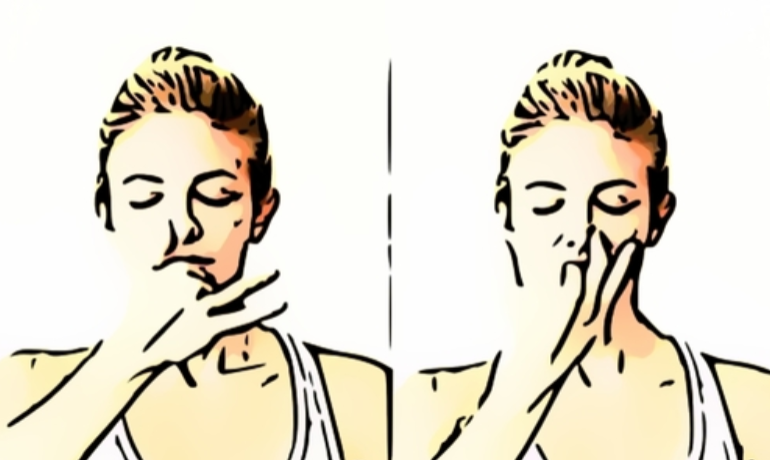
Nadi Shudhdhi Pranayama (Both Nostril Breathing) – First press right nostril and inhale and exhale at fullest from left nostril, next press left nostril and inhale and exhale at from right nostril. Repeat for 5 minutes.
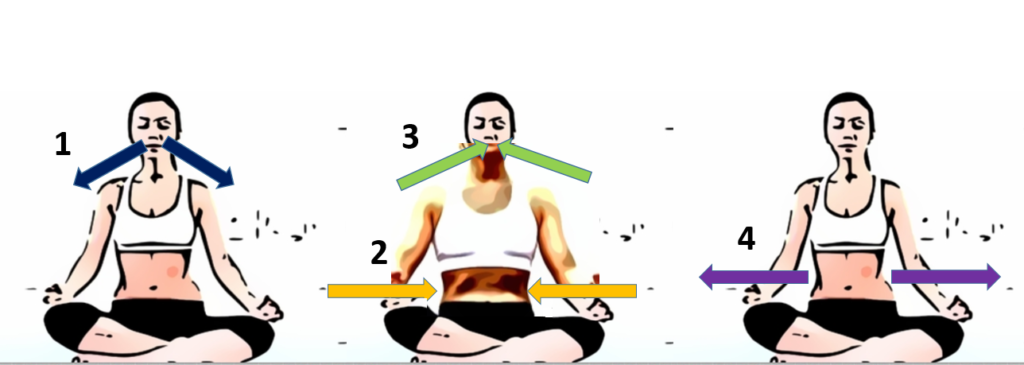
Kapalbhati (Skull Shining Breathing) – Sit straight with your hands on your knees with your eyes closed and place your palms on your thighs facing the sky. Breathe in as you exhale and jerk your stomach in.
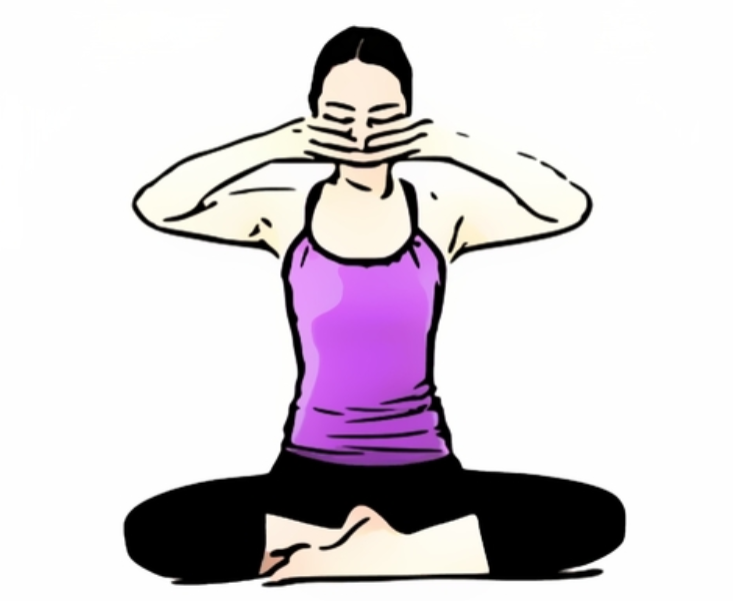
Bhramari (Humming Bee Breathing) – Start with natural breathing, and close your eyes (as long as closing them doesn’t produce anxiety within you). Then, put your lips lightly sealed, inhale through the nostrils. Exhale and make the sound of Om or m from throat prolonged way. Essentially it is a humming sound. Endure the sound until you need to inhale.
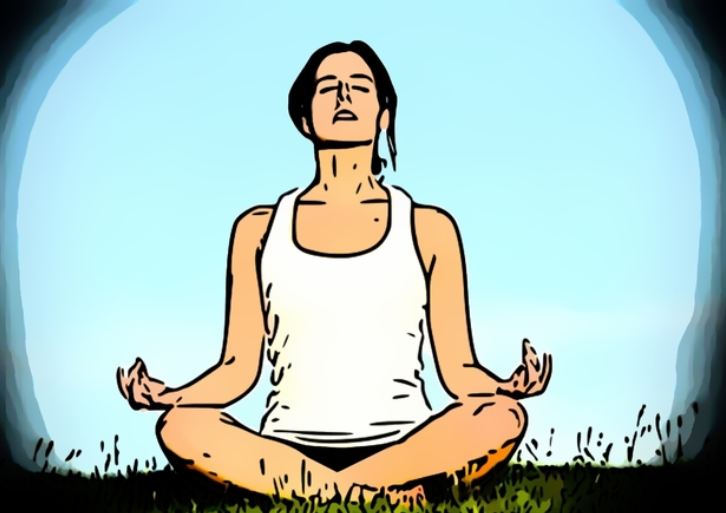
Ujjayi Pranayama (Victorious Breathing) – Close the mouth and squeeze the throat the glottis portion, make a short exhalation and then start inhaling. Slowly and rhythmically inhale and allow the air to pass through the restricted throat, creating a “friction sound”. And Hold as long as you can. Now exhale in the same way as inhalation. Keep doing it for 5 minutes.

Cooling Pranayama (Sitali, Sitkari, Sadanta) – In Sitali, air is inhaled by a tube formed by a protruding tongue similar to beak of a bird.

In Sitkari, air is inhaled by the gap formed by both sides of the tongue when the tongue is folded upwards between the 2 rows of teeth.

In Sadanta, air is inhaled by the gaps of teeth, when upper layer of teeth is retained on lower layer.
Factors lowers High Blood Pressure
Regular exercise
Cardiovascular exercise is one of the best options for a healthy heart. Aerobic exercise can also help lower your blood pressure. Regular exercise makes your heart stronger.
It includes hell lot of activity to perform. This includes:
- Walking
- Jogging
- Jumping rope
- Bicycling (stationary or outdoor)
- Cross-country skiing
- Skating, rowing
- High- or low-impact aerobics
- Swimming,
- Water aerobics.
A Healthy Diet for a Healthy Heart
If we maintain a proper dietary plan in our food regime it is possible to live healthy for longer. Foods that contain anthocyanin can also help to reduce a person’s blood pressure.

A diet which contains
- Berries (Blueberries and strawberries),
- Rich in fruits (Bananas, Kiwis, Watermelon),
- Leafy green vegetables (Cabbage, Beans, Papaya),
- Whole grains,
- Low-fat dairy products,
- Food having less saturated fat and cholesterol (Beets, Dark chocolate.)
These foods can surely help lowering your blood pressure.
Foods have a lot of impact on our Blood Circulation System in the body. These foods can bring down BP by up to 10 -20 mm Hg if you have high blood pressure. This eating strategy is also identified as the Dietary Approaches to Stop Hypertension (DASH) diet.
Lifestyle Changes to Lower High Blood Pressure
These lifestyle changes are good for not only High Blood Pressure But also for Other Health Issues. In this time where the whole world is facing pandemic, Immunity boost happens with few rules we maintain in life.
Such as:
- Lose extra pounds.
- Exercise regularly.
- Eat a healthy diet.
- Reduce sodium in your diet.
- Limit the amount of alcohol you drink.
- Quit smoking.
- Cut back on caffeine.
- Reduce your stress.
Conclusion
Various reports and data informs us about the grim effects of Hypertension around the world. Yoga teaches us three basic lessons for a healthy lifestyle: Regular exercise, healthy body weight, and absence of stress. Be aware while practicing Yoga if you have acute Hypertension. In some practices, such as standup postures, backbends, and inversions you should avoid if you have High BP. Check with your medic before starting yoga. Anything I left Please let me know in comments.
Further Reading On Different Topics
Have you enjoyed reading about “Top 7 Best Yoga Poses For High Blood Pressure Patients | How Yoga Helps Reducing Hypertension (High Blood Pressure)?”? Also, check various Topics on Yoga and about Steps to Control Porn in young People also. please check the article Overpopulation in India 2020also. Take a look at our collection of articles about books for life as well as other categories in health & Inspiring Indians Life also. Alternatively, read our article about the top benefits of honey for fighting against coronavirus to increase our stamina, & other interesting ideas for Various vegetables in our daily groceries.
References
- https://www.who.int/gho/ncd/risk_factors/blood_pressure_prevalence_text/en/World Health Organization. Global Health Observatory (GHO) data. accessed on February 27, 2019.
- GBD Compare | IHME Viz Hub. Global; both series, all ages, 2017, DALYS. Available from: https://vizhub.healthdata.org/gbd-compare/#, accessed on February 27, 2019. Back to cited text no. 3
- Gupta R, Gaur K, S Ram CV. Emerging trends in hypertension epidemiology in India. J Hum Hypertens 2018; doi:10.1038/s41371-018-0117-3.
- International Society of Hypertension. Available from: http://ish-world.com/public/world-hypertension-day.htm, accessed on February 27, 2019.
- Geldsetzer P, Manne-Goehler J, Theilmann M, Davies JI, Awasthi A, Vollmer S, et al. Diabetes and hypertension in India: A nationally representative study of 1.3 million adults. JAMA Intern Med 2018; 178 : 363-72.
- https://www.sciencedirect.com/science/article/pii/S0019483219304201- Prevalence of hypertension among Indian adults: Results from the great India blood pressure survey https://doi.org/10.1016/j.ihj.2019.09.012
- https://www.ncbi.nlm.nih.gov/pmc/articles/PMC4011565 – Hypertension in India: a systematic review and meta-analysis of prevalence, awareness, and control of hypertension
- https://www.macrotrends.net/countries/WLD/world/death-rate
- https://www.ncbi.nlm.nih.gov/pmc/articles/PMC3936692/
- https://www.ncbi.nlm.nih.gov/books/NBK268/
- https://www.cdc.gov/bloodpressure/about.htm
- https://www.heart.org/en/health-topics/high-blood-pressure/why-high-blood-pressure-is-a-silent-killer/what-are-the-symptoms-of-high-blood-pressure
- https://radiance-yoga.net/blog/the-effects-of-yoga-on-high-blood-pressure/
